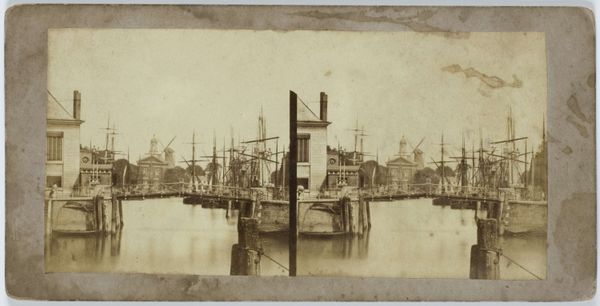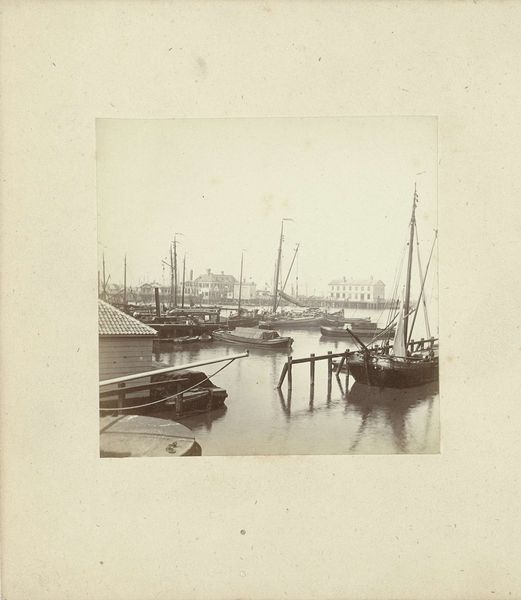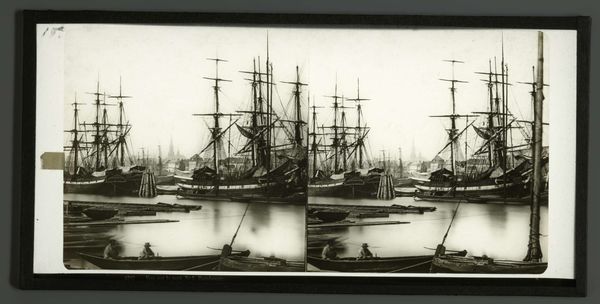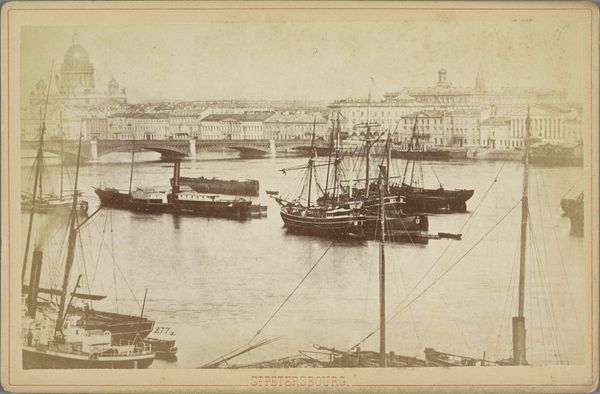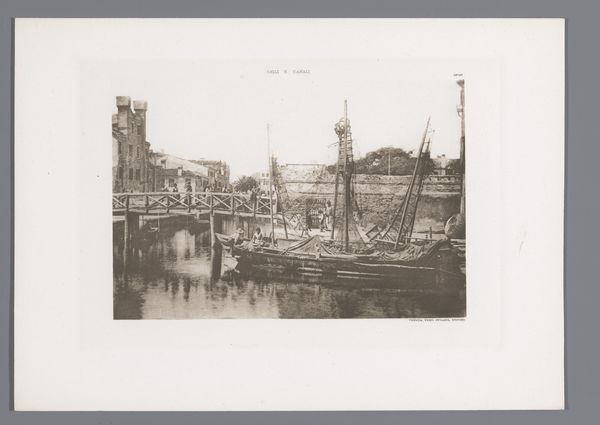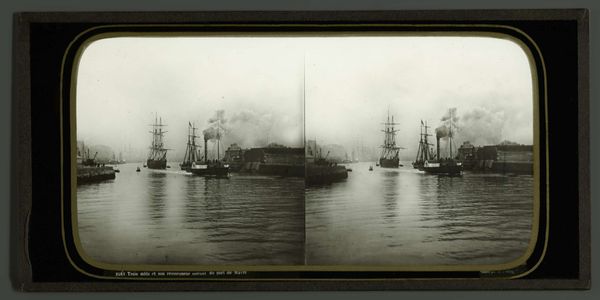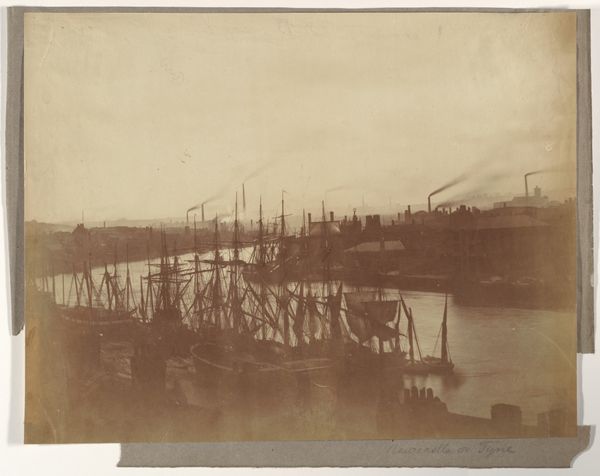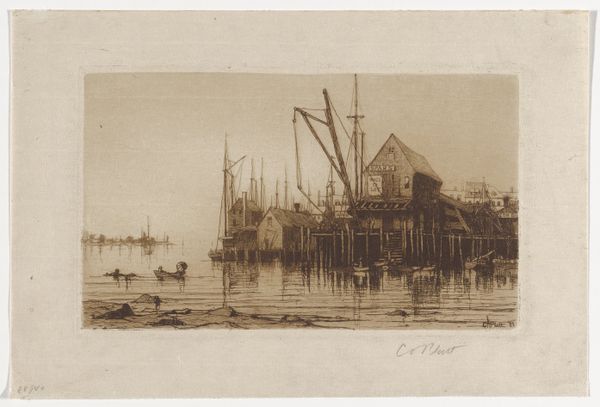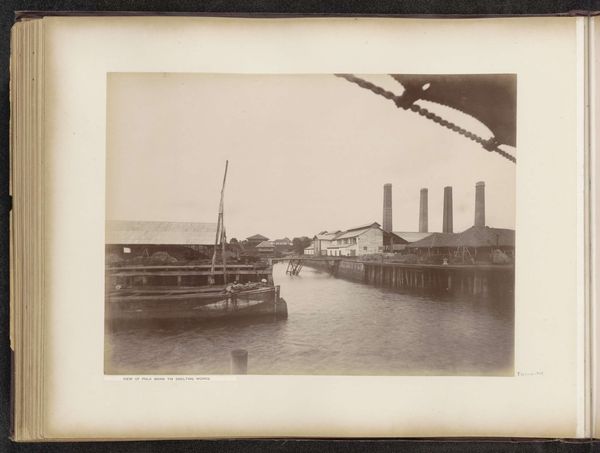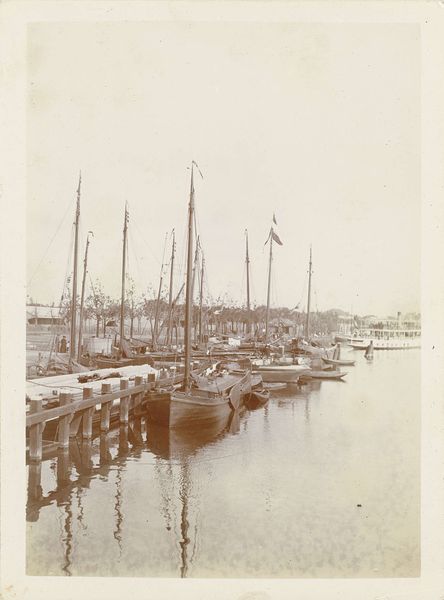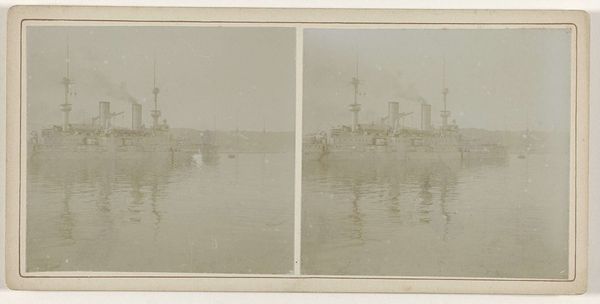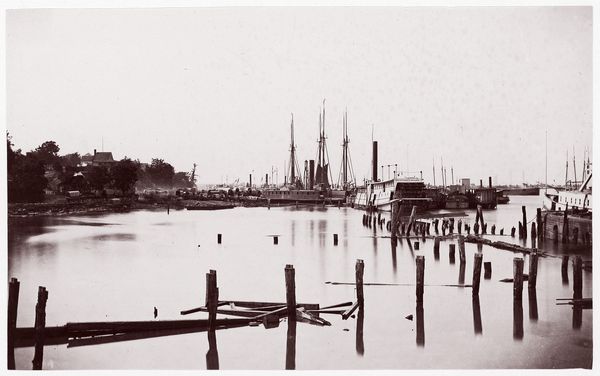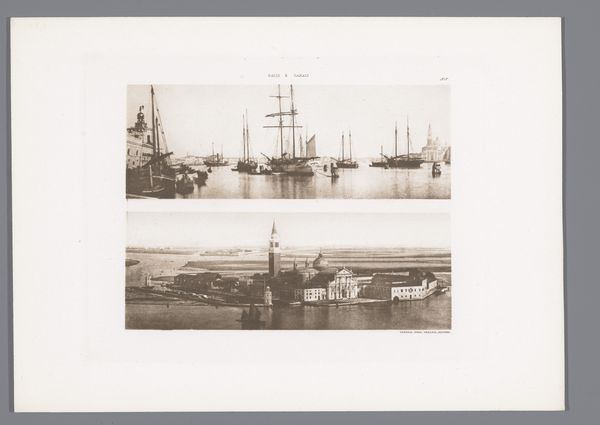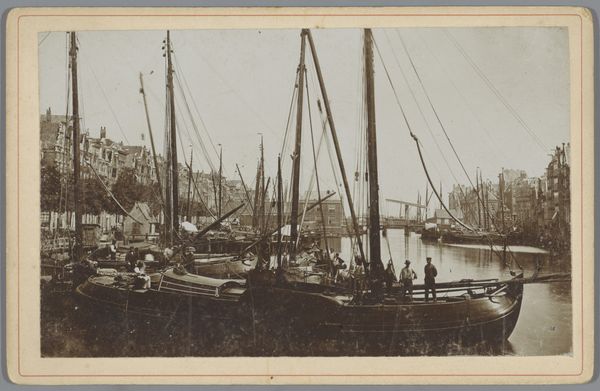
#
unusual home photography
#
sculpture
#
isolated focal point
#
art
#
unrealistic statue
#
framed image
#
framed composition
#
surrealist
#
framed
#
statue
Dimensions: height 85 mm, width 172 mm
Copyright: Rijks Museum: Open Domain
Charles-Henri Plaut captured this stereoscopic photograph of the harbor in Rotterdam using the wet collodion process. This was an innovative technique which involved coating a glass plate with light-sensitive chemicals, then exposing and developing it while still wet. The resulting image shows a bustling port, filled with ships that speak to the city’s commercial activity. The stereoscopic format – two nearly identical images side by side – would have created an illusion of depth when viewed through a special device. This was a hugely popular form of entertainment in the 19th century, bringing faraway places into the home. Consider the labor involved in producing this photograph: from the skilled work of preparing the collodion emulsion, to the physical effort of transporting bulky equipment. The rise of photography was entwined with industrialization, as new technologies transformed both art and everyday life, and brought images to a mass audience. Looking at Plaut's photograph through a material lens, we can appreciate how new forms of seeing also change the social landscape.
Comments
No comments
Be the first to comment and join the conversation on the ultimate creative platform.
